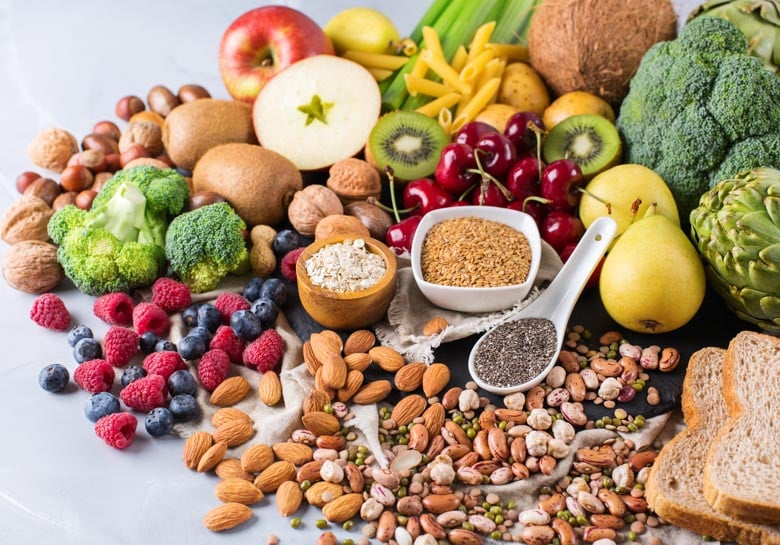Our Nutritionists Listens
Your preferences are unique to you. Your nutritionist tracks your food with you and makes specific recommendations to meet your goals.
Whether you learn best with one-on-one support or in a small group setting, we have the perfect program for you.
We also offer a wide array of self-guided materials, empowering you with valuable resources to further support your transformation.
How Nutrition Coaching Works
Our programs are meticulously designed to help you achieve your health goals while enhancing your overall well-being.
We provide personalized counseling and unwavering guidance, ensuring that every step of your journey is met with success.
Take Our QuizOnPoint's team of highly skilled online dietitians and nutritionists are dedicated to empowering you with the knowledge and tools to cultivate sustainable habits that lead to long-lasting success on your health and wellness journey.
Learn how to use an elimination diet to determine food intolerance and relieve uncomfortable symptoms
Let us help you build the perfect Elimination Diet

Dictionary.com Definition: "A procedure used to identify foods that may be causing an adverse effect in a person, in which all suspected foods are excluded from the diet and then reintroduced one at a time."
There is no one "elimination diet", this term captures the process of eliminating specific items and monitoring symptoms, following a thought out plan.
Can feel like a "fact finding" mission at many time- requires dedication and persistence.
"Elimination diets require motivation. It can be tough to make the needed dietary changes even though it is only on a short-term basis. Also, if you’re taking any medicines, discuss them with your physician before making changes to your diet and consult with an RDN."
IMPORTANT DIFFERENTIATION BETWEEN INTOLERANCE AND ALLERGY
More here:https://www.mayoclinic.org/diseases-conditions/food-allergy/expert-answers/food-allergy/faq-20058538
What conditions can an elimination treat?
Elimination diets constitute a reliable alternative to food sensitivity testing for identifying nonallergic food intolerances at a low cost. Although elimination diets are available, they require more effort and commitment on the part of clients, so dietitians must use their judgment in identifying the best candidates for this approach.
Depending on the practitioner, the protocols used when implementing an elimination diet can vary slightly, but generally they include an elimination and reintroduction phase. During the elimination phase, which should last between four and eight weeks depending on the severity of the client’s symptoms, all potentially problematic foods must be avoided and replaced with safer alternatives.
The approach can be adapted depending on the client, says Kelly Schmidt, RDN, LDN, owner of Paleo Infused Nutrition in Chicago, where she specializes in weight-loss and autoimmune disease nutrition. “Depending on the client’s diet before our meeting and their personality and relationship with food, I typically remove foods in phases and not all at once,” Schmidt says. “Yet, when removing all the foods, it’s just as important to educate clients on how to incorporate certain foods to help repair their digestive tract.” Foods that may help repair the digestive tract include bone broth, fermented vegetables, grass-fed organ meat, and coconut oil.
“Since there’s no universal safe food, there’s no universal elimination diet,” says Susan Linke, MBA, MS, RD, LD, CLT, a certified LEAP therapist and mentor in Dallas specializing in chronic inflammatory conditions related to food sensitivities, allergies, and intolerances. Depending on the client’s condition, a dietitian may eliminate gluten-containing grains; all grains; dairy; legumes; nightshade vegetables, such as tomatoes, eggplant, white potatoes, and most peppers (eg, hot peppers and paprika but not black pepper); soy; monosodium glutamate; and high-FODMAP foods. RDs should encourage clients to keep a journal during this period to ensure compliance and track any changes in symptoms and overall well-being.
Once the elimination phase has resulted in significant health improvements, RDs can assist clients throughout the reintroduction phase, during which eliminated foods are systematically reintroduced into the diet one at a time and every few days to assess tolerance. Any foods that trigger previous symptoms should be considered problematic and avoided. Foods that don’t appear to cause any reaction are deemed safe to reintroduce and can become part of the client’s regular diet, if desired.
“Although there are trigger foods or chemicals that are considered more common allergens and others that are more heavily associated with certain diseases, our individual immune systems still have the final say as to what our personal inflammatory triggers are,” Linke says. “There are no universal anti-inflammatory foods.”
This is why elimination diets can be a great tool for RDs to customize their clients’ nutrition requirements, which depend on their medical condition and individual tolerance.
From <https://www.todaysdietitian.com/newarchives/070113p10.shtml>

Your preferences are unique to you. Your nutritionist tracks your food with you and makes specific recommendations to meet your goals.

Based upon your daily routine, we will build a custom plan to help you feel great using a vegan / vegetarian meal plan

Success does not happen overnight. If something isn't working quite right, we make changes right away.
“My team and I would be honored to be part of your health journey! Our priority is your health and happiness; no goal is too big or too small. We look forward to working with you soon!”
